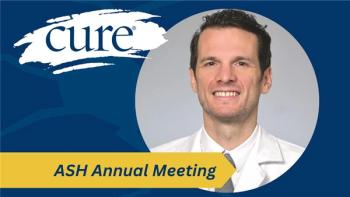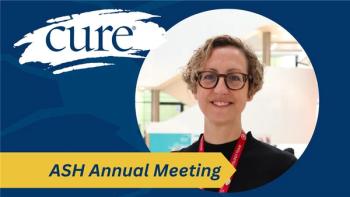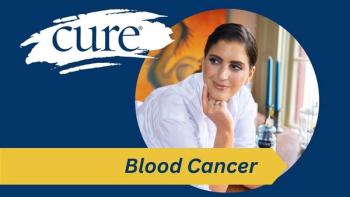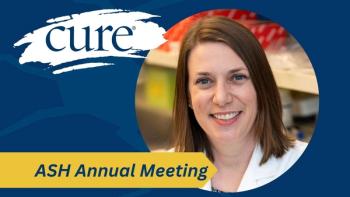
Background on Chronic Lymphocytic Leukemia and Treatment
Transcript:
Harry P. Erba, M.D., Ph.D.: Hello and thank you for joining this Cure Connections® program titled, “Considering Chemotherapy-Free Treatment Options in CLL.” Evolutions in care have led to improved outcomes and more tolerable treatment options for patients with chronic lymphocytic leukemia [CLL]. And now, there is even the opportunity to forego chemotherapy altogether.
I am Dr. Harry Erba, professor in the department of medicine at the Duke University School of Medicine and member of the Duke Cancer Institute in Durham, North Carolina. I am joined today by Nathan Ferguson, who is going to share the details of his journey with chronic lymphocytic leukemia and subsequent treatment with novel therapy. We are also joined by Dr. Ian Flinn, Nathan’s care provider and director of the Lymphoma Research Program at Sarah Cannon Research Institute and Tennessee Oncology in Nashville, Tennessee; Lisa Ferguson, Nathan’s wife and caregiver; Camille Ballance, hematology nurse practitioner for Tennessee Oncology in Nashville, Tennessee; and Doreen Zetterlund, patient/advocate representative from the CLL Society. Thank you so much for joining us. Let’s begin.
I’d like to start with you, Ian. Can you tell us a little bit about CLL, how it fits into B-cell lymphomas, and just how prevalent it is?
Ian W. Flinn, M.D., Ph.D.: First of all, CLL is a malignancy, one of our white blood cells, a B-cell malignancy. It’s a chronic disorder, as the name points out, meaning it’s a slow growing disorder, it does not generally grow very quickly. It’s very different from say acute leukemias, where they are often medical emergencies.
CLL is a cousin or closely related to lymphomas. Lymphomas are other malignancies of lymphocytes. Generally, they present with large lymph nodes, they’re swollen, whereas patients with chronic lymphocytic leukemia tend to have an elevated white blood count or anemia or low platelets. Now, clinical lymphocytic leukemia is the most common leukemia in the United States, although it’s still relatively rare compared to other cancers. There are somewhere around 15,000 new patients who are diagnosed with CLL every year in the United States.
Harry P. Erba, M.D., Ph.D.: Because it is a chronic illness, I imagine that more people than that are living with it in the United States.
Ian W. Flinn, M.D., Ph.D.: Exactly. If you think about the prevalence of the disease, how many people are living with it, it’s huge. Because, thankfully, it does grow very slowly and there are many options for treatment these days.
Harry P. Erba, M.D., Ph.D.: And now we do have some more options that we’re going to be talking about, but they all were developed based on a deeper understanding of the biology of the disease. Can you share some of that information with us?
Ian W. Flinn, M.D., Ph.D.: The biology of the disease, as I mentioned, is that these cells are slow growing, and in fact, unlike acute leukemias where the cells grow rapidly, this is a disease of what we call lymph accumulation. Meaning it’s not so much that the cells, at least in the beginning, these malignant lymphocytes are growing quickly, but that they fail to die. Most cells in our body—hair, your gastrointestinal tract—live through a normal lifecycle, where the cells are supposed to begin as a young cell, then go through a maturation and die off. The problem in CLL is that these cells don’t die off. Now there are some new advances in the biology understanding of how the signaling events prevent these cells from dying off. And there’s a whole class of drugs that have been developed, a whole family of drugs that have been developed, that take away some of these survival signals, block the signals that are driving this slow and perennial growth of malignant cells.
In this case, we’re talking predominantly about a class of drugs called Bruton tyrosine kinase [BTK] inhibitors. And they were a major breakthrough in the development of therapies for patients with CLL. The history dates back to Ogden Bruton, M.D., who was a pediatrician at Walter Reed National Military Medical Center. He noticed that these children who came into his practice had problems with recurrent sinopulmonary infections, lung and sinus infections. And that seminal clinical observation in the 1950s ultimately led to the discovery of what was causing this defect. And it was this Bruton tyrosine kinase, as we now call it, that was missing in these children.
Well we’ve taken that disease and turned it into a therapy. We now pharmacologically, through medications, can block that same pathway using these Bruton tyrosine kinase inhibitors and turn to very effective, low side effect treatments for patients.
Harry P. Erba, M.D., Ph.D.: We’re also targeting the signals that keep the cells from dying, is that right?
Ian W. Flinn, M.D., Ph.D.: Exactly. There’s a signaling that occurs that is turned on in CLL cells that shouldn’t be turned on. And so by inhibiting that signaling event, we’re able to block that signal and allow the cells basically to go through a natural death that they should have undergone if they weren’t transformed and didn’t have malignant transformation.
Transcript Edited for Clarity




